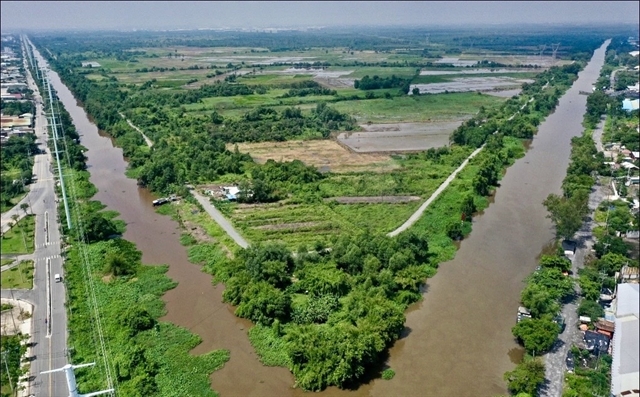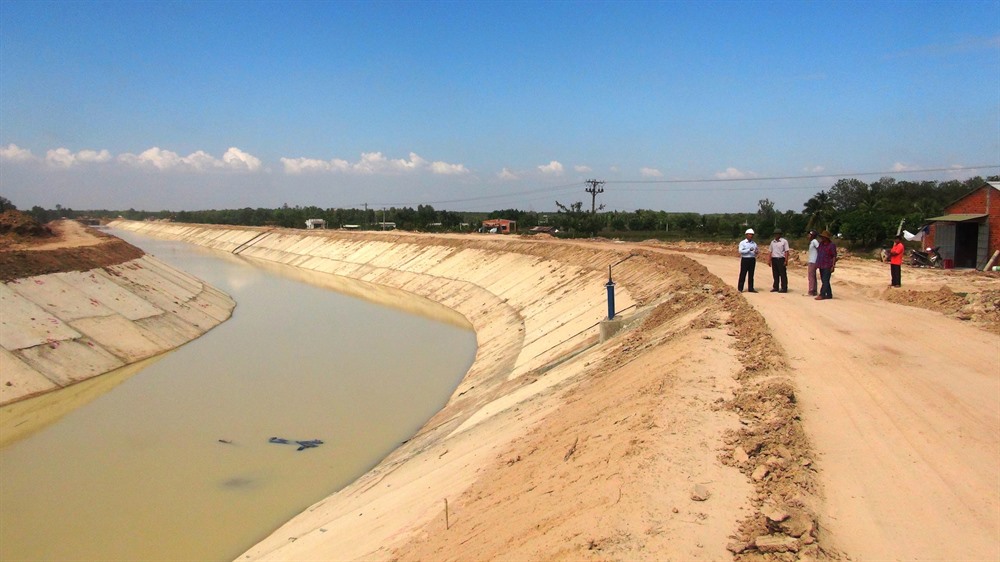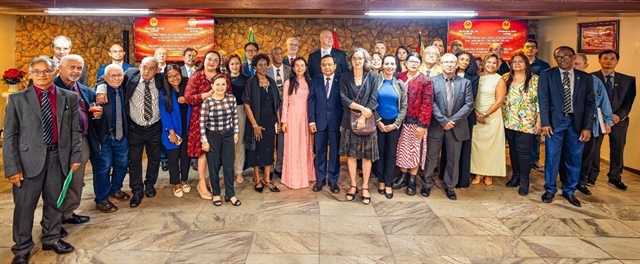 Society
Society

The southeastern province of Tây Ninh has built and upgraded irrigation works with the aim of producing clean agricultural products.
 |
| The Tây Canal provides water for northern areas in Tây Ninh Province. — VNA/VNS Photo Thanh Tân |
TÂY NINH — The southeastern province of Tây Ninh has built and upgraded irrigation works with the aim of producing clean agricultural products.
At a total cost of VNĐ1.5 trillion (US$64.6 million) from the central and local government budgets, the new irrigation works include the repair and upgrade of the Tây Canal and a project west of the Vàm Cỏ River.
The Tây Canal provides water for irrigation, household use and industrial production in the northern districts of Tân Biên, Dương Minh Châu and Châu Thành, and Tây Ninh City.
The project costs VNĐ400 billion ($17.2 million) and is expected to be completed by 2021.
Trần Quang Hùng, director of the Dầu Tiếng – Phước Hòa Water Resource Exploitation One - Member Company, said the project would provide water for 21,000ha of farming land and nearly 6,500ha of aquaculture, and would also drain water for nearly 9,000ha.
Lê Hoàng Hải, who grows cassava in Tân Biên’s Trà Vong Commune, said there would no longer be a water shortage. “Families here will grow one rice crop and one cassava crop a year.”
Hải now grows only one cassava crop a year because of the water shortage.
The Tây Canal draws water from Dầu Tiếng Reservoir, the country’s largest irrigation reservoir. The reservoir contains 1.58 trillion cu.m of water and spans Tây Ninh, Bình Phước and Bình Dương provinces.
Construction of the irrigation project west of the Vàm Cỏ River to transport water from the Dầu Tiếng Reservoir to Châu Thành and Bến Cầu districts costs nearly VNĐ1 trillion ($43 million) and is expected to be completed by 2022.
The irrigation project will supply water to nearly 17,000ha of farming land, animal husbandry, industrial production and household use.
Dương Văn Thắng, deputy chairman of the province’s People’s Committee, said the farming area in the west communes of Châu Thành and Bến Cầu face severe water shortages in the dry season.
The water resources supplied to communes have to rely on the Vàm Cỏ Đông River via pumping stations, which requires high operation costs.
When the irrigation project west of the Vàm Cỏ River is finished, the communes are expected to turn into fertile farming areas and switch to high-value crops for sustainable commercial production.
High value crops
In 2016-18, the province has reduced its rice and cassava growing areas and increased growing high-value fruits, according to the province’s Department of Agriculture and Rural Development.
The fruits include longan, grapefruit, durian, mango and soursop.
During the period, the province’s fruit growing area had a growth rate of 9.1 per cent a year, taking the province’s total fruit area to 20,212ha by the end of last year.
The province has about 1,300ha of fruits, including soursop, grapefruit, pineapple, banana and dragon fruit, which are grown under VietGAP standards.
More farmers in the province use advanced farming techniques such as efficient irrigation facilities to grow fruits and other crops.
Nguyễn Thành Kỉnh, who grows honeydew melon in a 1ha green house, said he invested VNĐ5 billion ($215,000) to build a greenhouse for planting clean honeydew melon. He earned a profit of VNĐ200 million ($8,600) from the crop harvest over 70 days.
About 10 per cent of the province’s agricultural products are produced under Vietnamese and global good agricultural practices (VietGAP and Global GAP) standards, according to the department.
The province targets at least 40 per cent of its agricultural products meeting VietGAP, Global GAP, or organic standards next year.
The province has zoned 18 hi-tech agriculture areas with a total area of more than 17,000ha and called on investment in the areas.
It has provided incentives for investors such as financial support to build infrastructure facilities.
The average annual income of rural people in the province is VNĐ39.9 million ($1,700). — VNS




